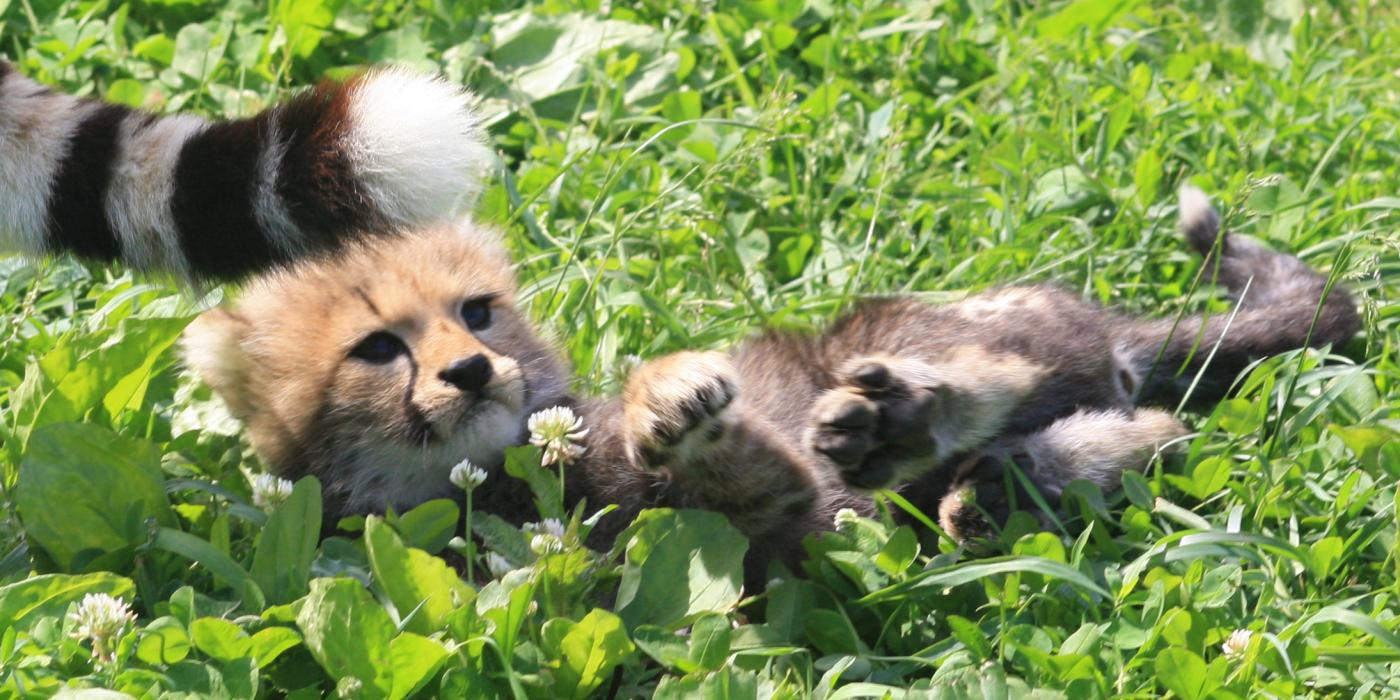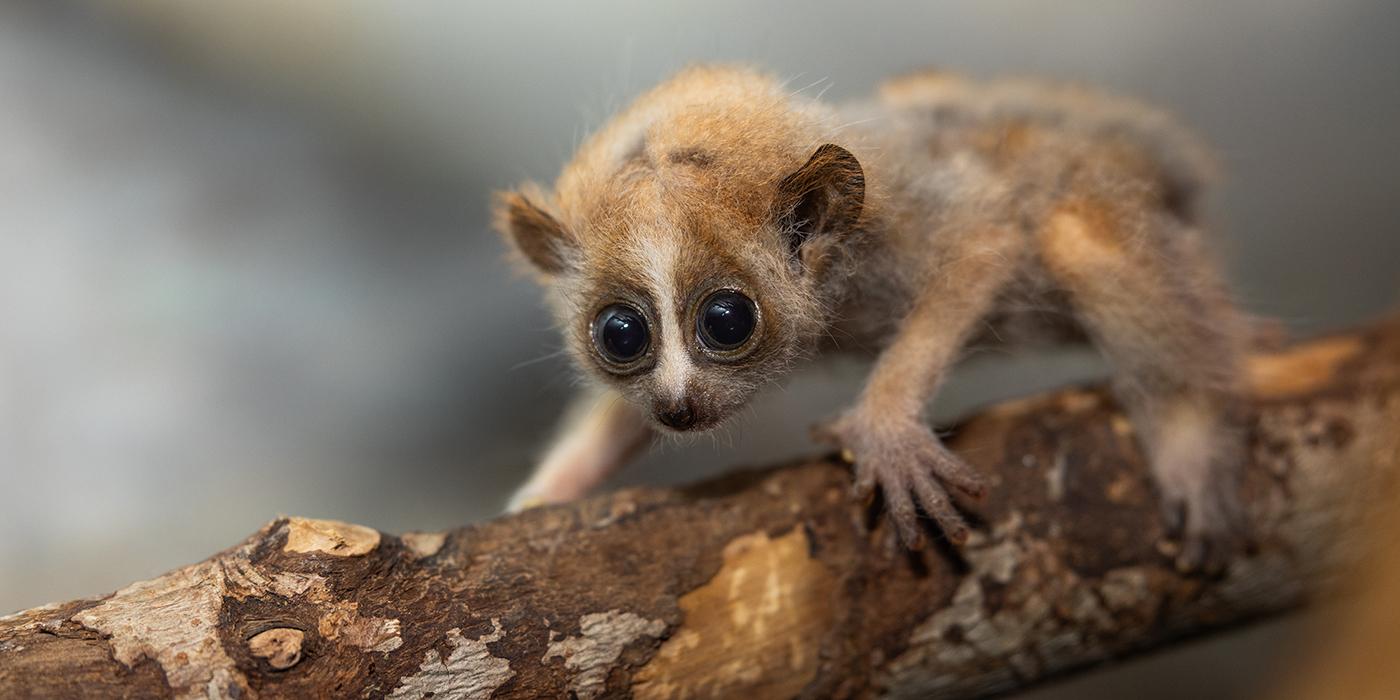Catching Up with the Cheetah Cubs: July 2020
Romping through grassy pathways, taking a taste of meat and exploring exciting new places to play made June a jolly good month for the Smithsonian Conservation Biology Institute’s cheetah family. Hear all about the highlights from carnivore keepers Amber Dedrick and Adri Kopp and keeper intern Shannon Richard.
May 30 | from Shannon Richard
Echo and her cubs—Amabala, Jabari, Hasani and Erindi—spent the morning resting in their larger yard under the shade of the tall grass. In the afternoon, they ventured to the smaller yard to eat. We place their daily diet on a tray to make it easily accessible by all. Echo led her cubs to the tray, then sat back and supervised them while they ate. Every day, the cubs eat more. Today, the four of them ate about 400 grams, or 0.8 pounds. The cubs are still nursing, so most of the nutrition they receive comes from Echo’s milk.
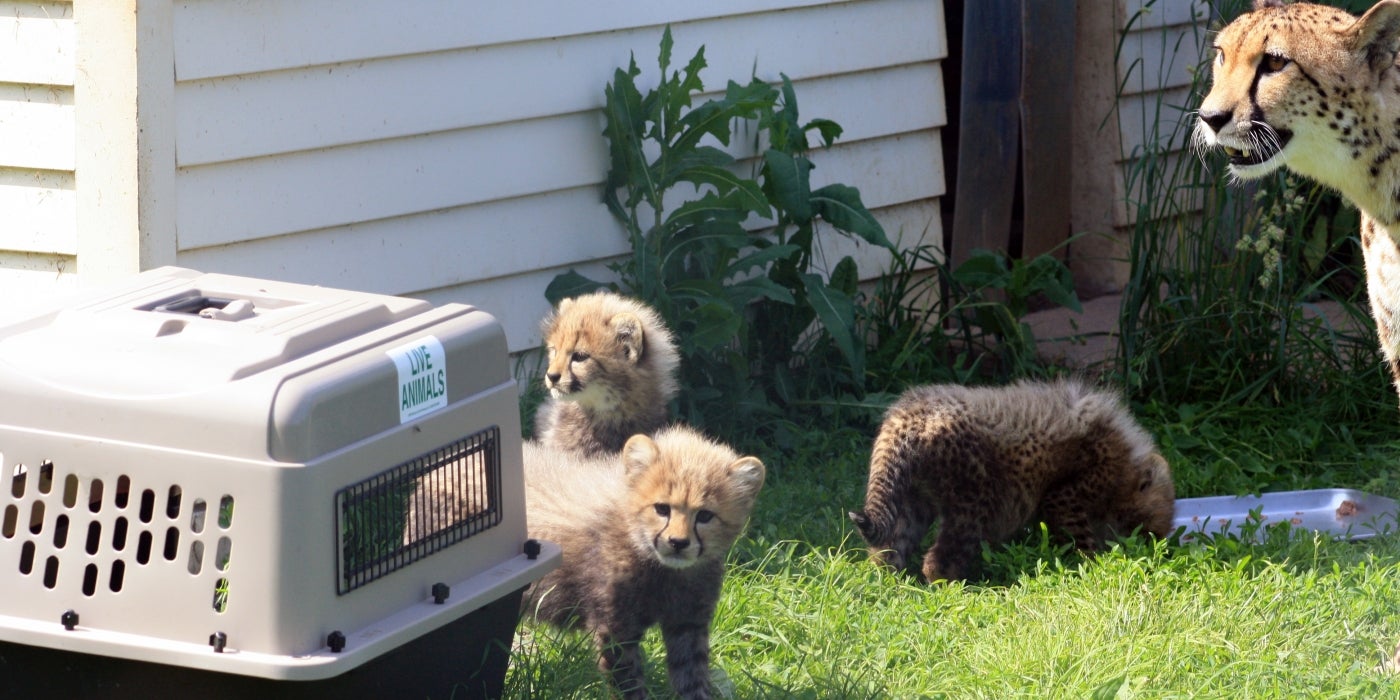
June 1 | from Amber Dedrick
The cubs are growing accustomed to the new routine of traveling to the smaller yard to eat. Echo, for her part, is getting the hang of calling them and letting them know when it is mealtime!
We’ve added a couple of features to this yard which will help us take care of the cubs in the long term. The first is a scale, which we use to monitor their weights and growth. As part of our positive reinforcement training program, we ask our cheetahs to voluntarily climb upon a scale. If they choose to do so, they’ll receive a meatball reward.
We’ve also added a couple of crates to the yard. We use these during veterinary exams and to transport animals between their enclosures and the veterinary hospital. For now, it is just a fun enrichment item that they can play in and explore. Getting them comfortable and accustomed to entering the crates helps minimize their stress if we need them for transport in future.

June 3 | from Shannon Richard
Now that the cubs are following Echo into the smaller yard regularly, we were able to mow some pathways in the larger yard for the first time. This makes it easier for the cubs to move around their enclosure. They did not seem to mind us mowing at all—they were so busy investigating the crate. All of the cubs stuck their heads inside for a peek, and Jabari went inside all by himself. He really lives up to his name, which means “fearless” or “brave one” in Swahili!
Today was also the first time we have observed the cubs entering the indoor stall where we conducted voluntary ultrasounds on Echo while she was pregnant. Jabari and Hasani—whose name means “handsome” in Swahili—spent the most time inside. Jabari even ate some of the meat in mom’s bowl.
June 5 | from Shannon Richard
Today, we observed the cubs running and chasing each other down the wide pathways we have created for them. They are still getting used to the strange noises coming from the lawn equipment we use. The cubs have been doing great around weed whackers but are still wary of the riding lawnmower. With the new paths, though, it is much easier for them to find and follow Echo. They have been spending some quality time together toward the front of their yard, where the grass has been trimmed. On another note, the cubs are really developing a taste for meat. Now, they ignore Echo’s calls for them if there are any meat “crumbs” left on the tray!
June 6 | from Adri Kopp
Wrestling and playing with littermates is an important part of development for any aspiring predator. Cheetah cubs in the wild have to learn how to successfully hunt and take down prey if they want to feed themselves when they are older. While our cheetahs do not have to hunt for their food, wrestling and chasing each other allows them to strengthen their athletics and sharpen their dexterity while testing out different techniques.
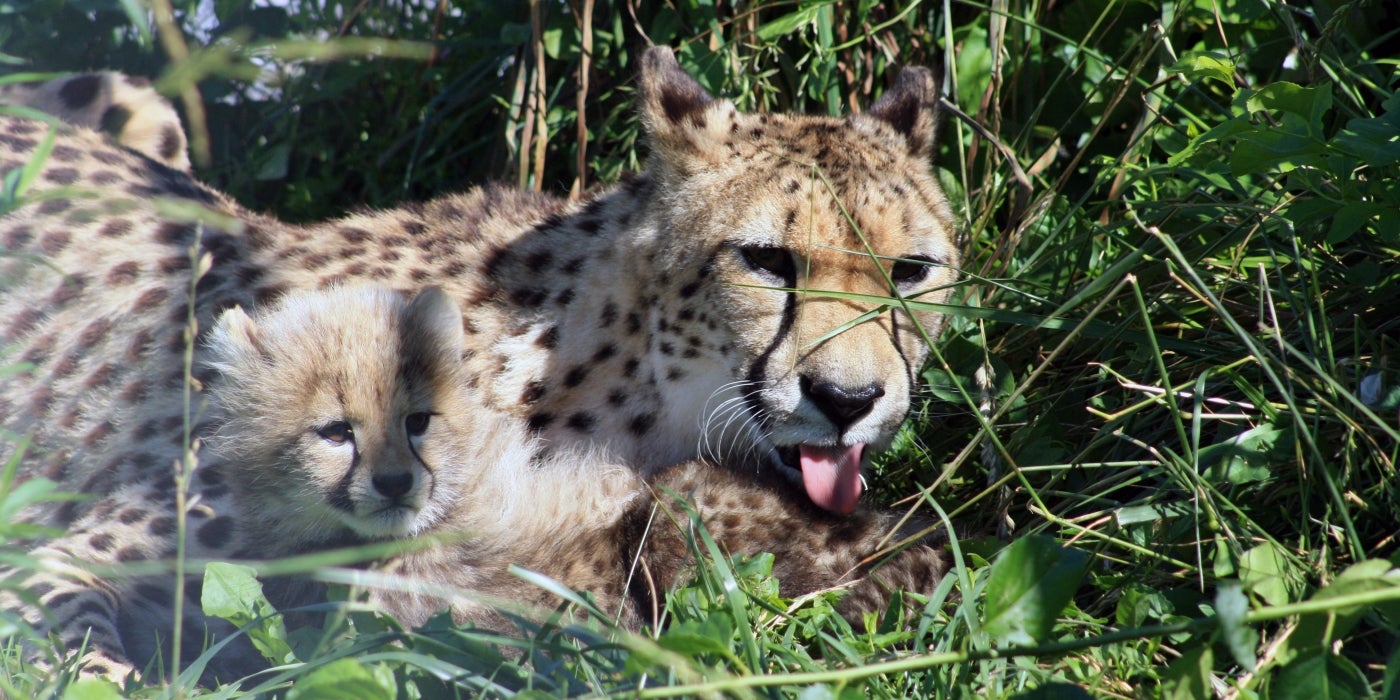
June 7 | from Amber Dedrick
Weigh-in day for the cubs! When we last weighed them May 14, they were all just over 5 pounds. You may remember that the cubs were remarkably calm through that process. This experience was very different, as the cubs are much more mobile these days.
Before we began, we called Echo into her indoor enclosure and gave her a favorite treat to keep her occupied. Then, we quietly approached the cubs, refreshed their shave marks, and placed them on the scale. Female Amabala (a.k.a. “right hip” shave mark) weighed 8.3 pounds, as did male Hasani (“left shoulder”). Their brothers Erindi (“base-of-tail”) and Jabari (“left hip”) tipped the scales at 8.8 and 8.9 pounds, respectively. All in all, these are good gains for growing cubs.
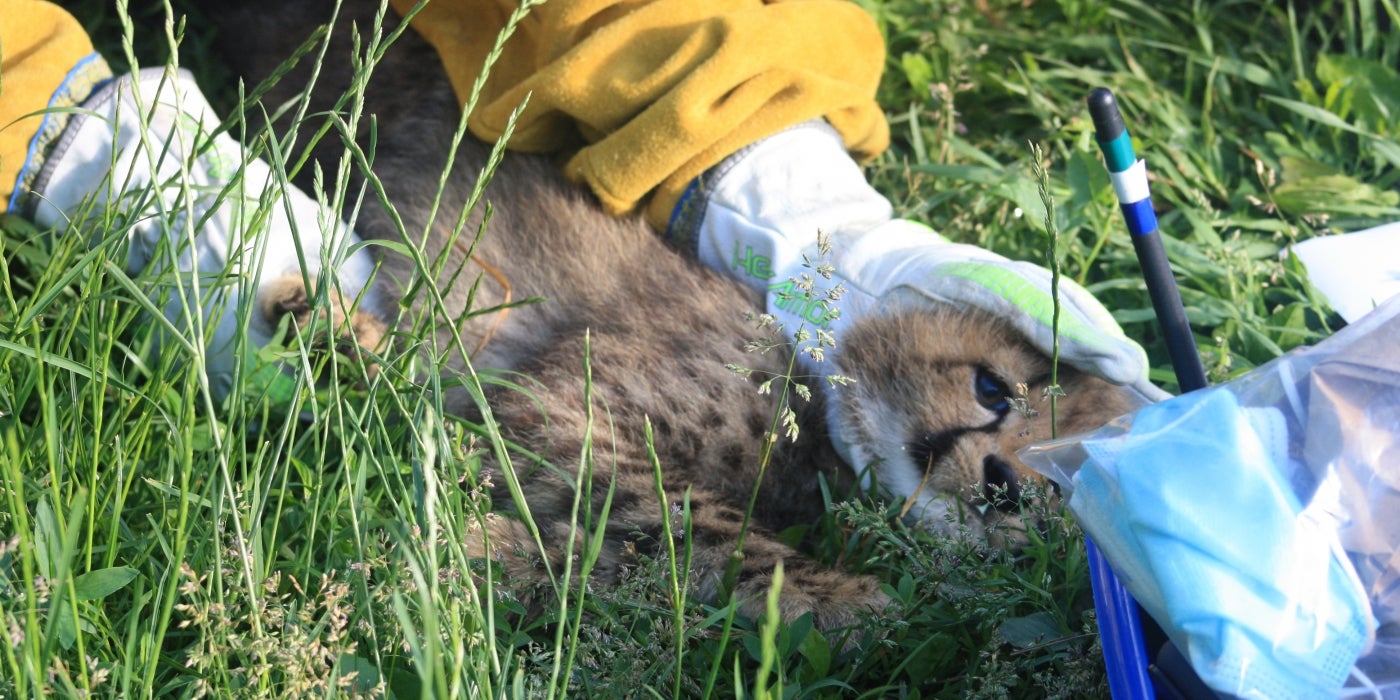
June 10 | from Shannon Richard
On the heels of the cheetah cubs’ big weigh-in comes yet another important day: their 9-week veterinary exam. Our veterinary team remarked that all cubs appear to be healthy and strong, and they gave them a clean bill of health.
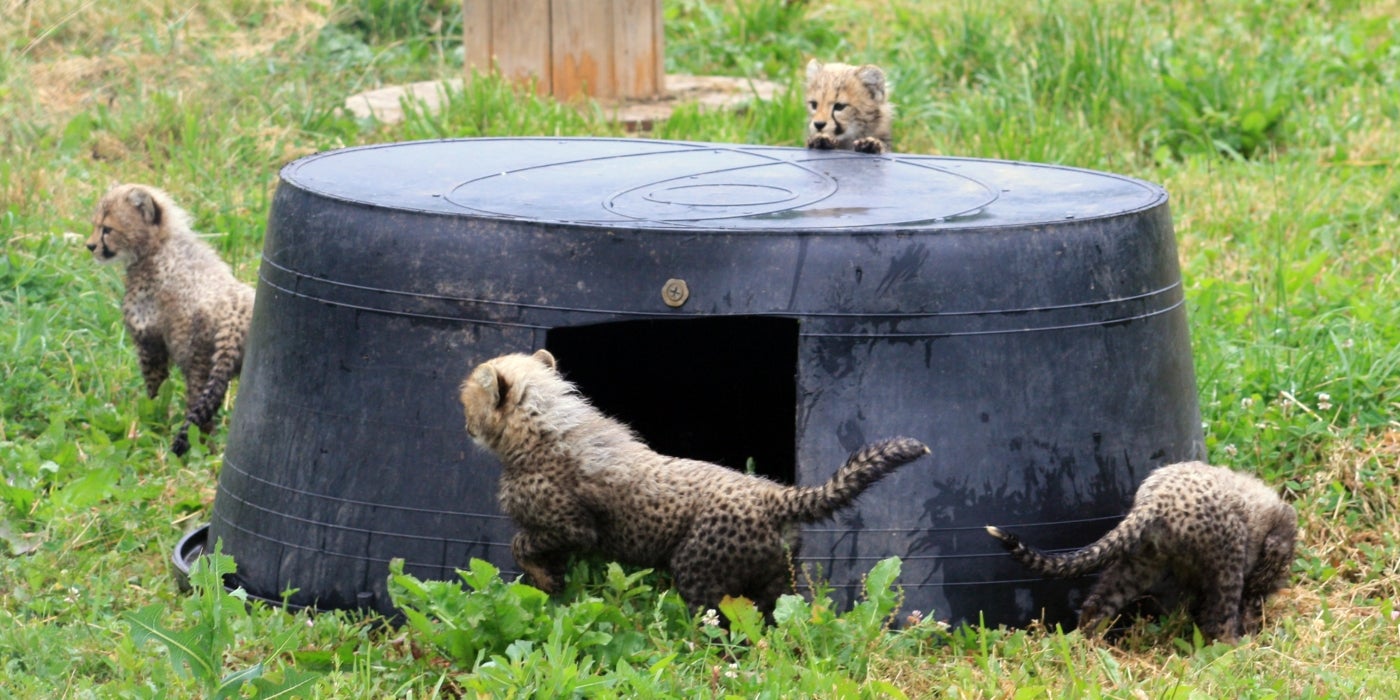
June 18 | from Shannon Richard
This week, an older female cheetah named Sanurra moved to the enclosure next to Echo and her cubs. We always wait until a mom and her cubs have had a few months to bond with each other and receive their first vaccines before we introduce next-door neighbors. So far, everything seems to be going well between them. Meanwhile, in the cubs’ yards, we gave them a tub to play in, explore and practice climbing. It is important that they keep physically active and strengthen their muscles.
Everyone has gotten the hang of coming to the tray for meat. The next step for us is to move the tray from their smaller yard to the indoor stall. We put their tray of food on top of the adult scale to show them that it is not scary and to encourage them to approach it. Eventually, we will train them to climb on top of the scale for a meatball reward as part of their routine husbandry, just like we do with the adults.
The cubs' father, Scotty, lounges with his brother Asante at the Smithsonian Conservation Biology Institute.
June 21 | from Adri Kopp
Happy Father’s Day! In light of the holiday, we wanted to introduce you to the cubs’ father, 4-year-old Scotty. Male cheetahs do not participate in the rearing of cubs. Instead, Scotty lives separate from his offspring in a coalition with his brother, Asante. In the wild, cheetah brothers from the same litter will generally stick together, so we mimic that social grouping in human care, too.
When the Species Survival Plan (SSP) scientists recommend that a female like Echo is a good match for a set of brothers equally, the cheetah team lets personality and behavior decide which male will be her mate. In the case of Scotty and Asante, Asante is usually the dominant male. (For example, he always eats first at feeding time.) However, when it came time to breed, Asante showed very little interest in Echo. Scotty, on the other hand, was very enthusiastic to meet her!
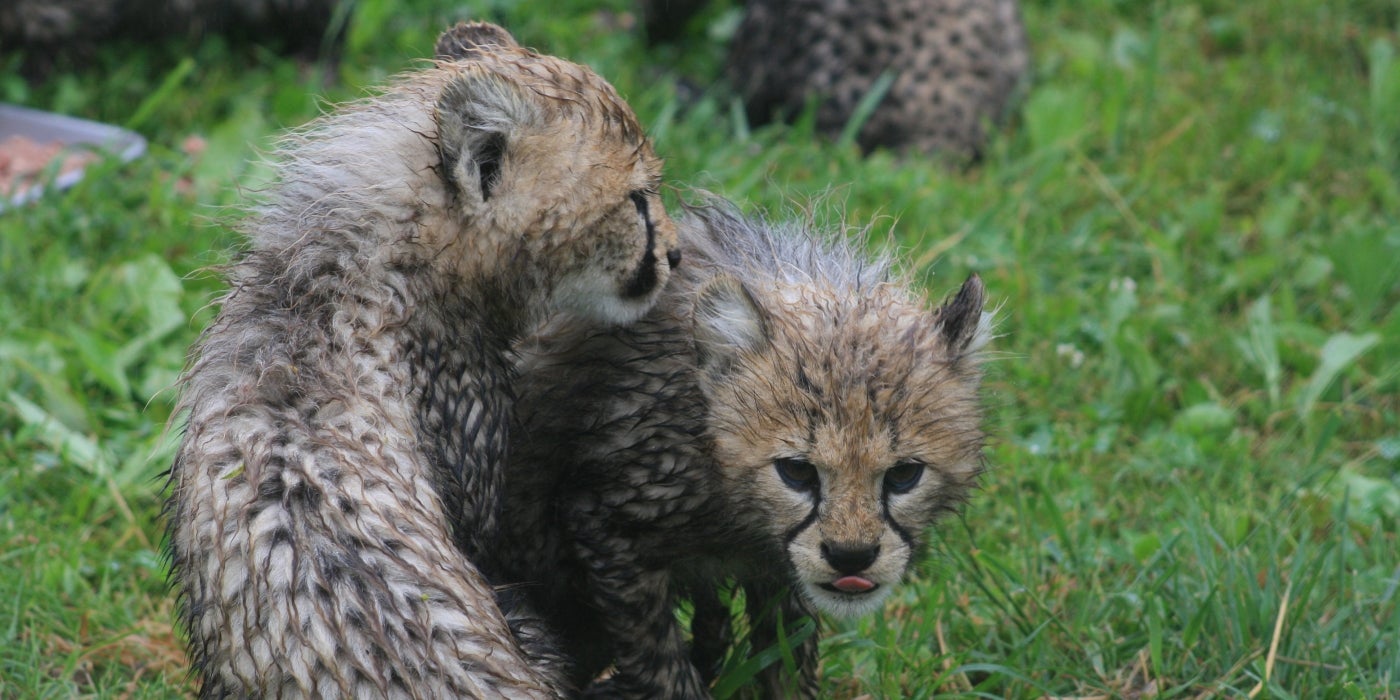
June 25 | from Shannon Richard
Scale training has officially begun! Over the last few days, we have made good progress in encouraging the cubs to come close to the scale. We now place the tray of meat on top of it, or hold a spoonful of meat just above the scale so that the cubs jump up to eat.
We have also started allocating small portions of their diets into bowls to help the cubs associate them with food. The next step is to put the bowl in the entrance of their crate, which will encourage them to voluntarily enter it. They continue to get bigger and stronger by the day!
This story appears in the July 2020 issue of National Zoo News. Can’t get enough of the cheetah cubs? Watch them on the Cheetah Cub Cam, or scroll through past updates to see adorable photos and videos of the cubs when they were younger.
Related Species:

